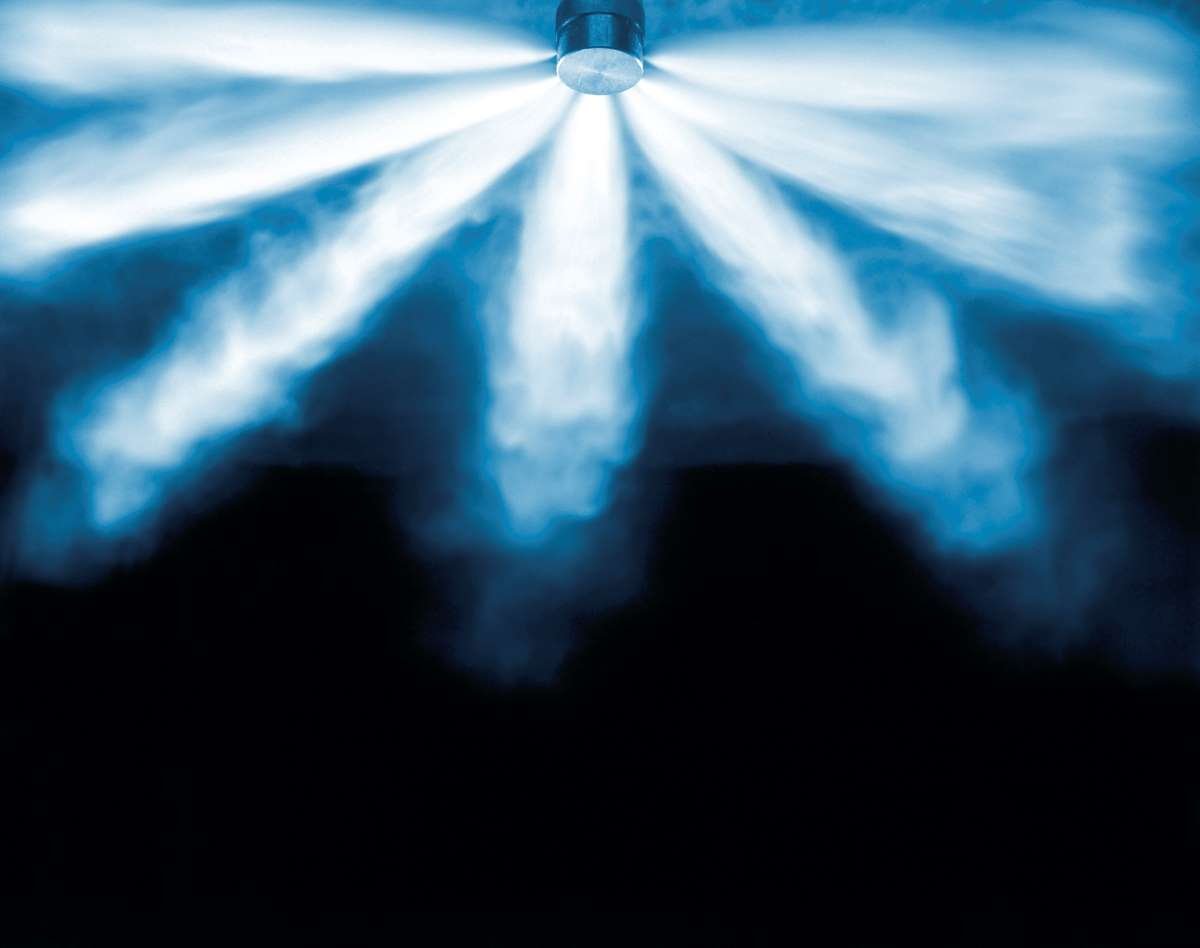
Water sprinklers are just one type of fire suppression system and are suitable in many cases. But, what if your property is susceptible to damage from water? Think expensive computer equipment, precious paintings, and fine art.
In order to provide your property with the best protection, it is important that you know the differences between fire sprinklers and other fire suppression systems.
Continue reading to learn what the differences are between water sprinklers and other fire suppression systems, how the different systems are triggered, and which system is most appropriate for your needs.
What Are the Differences Between Water Sprinkler Systems and Other Fire Suppression Systems?
As the name suggests, water sprinkler systems extinguish fires by releasing water when the system detects the presence of fire or smoke.
Water sprinkler systems are generally divided into two categories:
Wet Pipe Sprinklers
Wet pipe sprinkler systems utilize pipes that are constantly filled with pressurized water. Since water is always present in the pipes, these systems are able to discharge more quickly than dry pipe sprinkler systems are able to.
Dry Pipe Sprinklers
These water sprinkler systems have pipes that fill with water only when the system is activated. Dry pipe sprinkler systems are most appropriate for environments where water might freeze, for example, in warehouses located in cold climates.
Water is highly effective at extinguishing fires and is also inexpensive.
However, water cannot always be used to put out fires. Other fire suppression systems need to be considered, as explained below.
What Other Fire Suppression Systems Are Available?
In addition to water sprinklers, there are other fire suppression systems available, such as:
Water Mist Systems
Water mist systems work by highly pressurizing water in order to create fine droplets with a large surface area. Because of the large surface area of the water droplets, the droplets quickly evaporate into steam when they make contact with fire. As they evaporate into steam, the droplets absorb the heat needed to keep fires burning.
In comparison to water sprinkler systems, water mist systems cause significantly less water damage.
Wet Chemical Systems
Wet chemical systems include foam fire suppression systems.
Foam fire suppression systems mix water and a foaming agent in order to fill large spaces. The foaming agent mixture smothers the fuel and oxygen needed to sustain fires, while the water component cools the heat. Foam fire suppression systems are highly efficient and are able to extinguish fires in seconds.
Foam fire suppression systems are ideal for places including, but not limited to, buildings full of combustible liquids. This is because, in addition to extinguishing fires, these systems also prevent fires from reigniting.
Foam fire suppression systems are cost-effective compared to other non-water-based fire suppression systems.
Clean Agent Systems
Clean agent systems utilize inert gases to put fires out and are best for protecting high-value items and sensitive equipment.
The chemicals used in clean agent systems are electrically non-conductive, which makes them ideal for places such as data centers, server rooms, and fine art museums.
Unlike other fire suppression systems, there is no residue left behind that needs to be cleaned up. That’s because clean agent systems use inert gasses such as nitrogen, argon, and carbon dioxide (CO2 systems) to deprive fires of necessary oxygen and heat. The main effect on how clean agents extinguish the ignition source is through the removal of the heat source by lowering the flame temperature. This slows the heat release rate as the temperature lowers and the production of fuel vapor is reduced.
Clean agent systems act quickly and are able to confine fires to limited spaces, preventing further destruction. Clean Agent systems activate in the incipient stage, limiting downtime and damage to valuable equipment.
How Are the Different Systems Triggered?
Traditional fire sprinkler systems are triggered by the rising hot air produced by fires. Inside of each sprinkler head is a glass bulb filled with liquid that expands when it comes into contact with heat. When the liquid is heated to between 135 and 165 degrees Fahrenheit, the liquid begins to expand and eventually shatters the glass bulb. Once the glass bulb shatters, the sprinkler head activates.
Some more sophisticated fire suppression systems use electronic heat detectors to trigger the system. The heat detectors are strategically placed around a property. When heat is detected, the fire suppression system triggers before fires can start or spread to high-value items.
All fire suppression systems have a manual release mechanism. Should the system fail to trigger automatically, the system can be activated manually by pulling a switch or pushing a button.
How Koorsen Fire & Security Can Help You Choose the Right Fire Suppression System to Protect Your Property
Choosing the best fire suppression system for your needs can be difficult. Let Koorsen Fire & Security help.
The experts at Koorsen Fire & Security have decades of experience developing and implementing fire suppression systems for a large variety of industries. Koorsen experts take the time needed to understand the unique needs of each customer in order to develop the most ideal fire suppression system.
If you want to be sure your property is protected in the event of a fire, speak with a Koorsen Fire & Security expert today.


